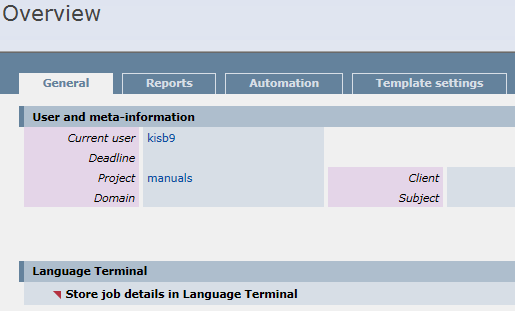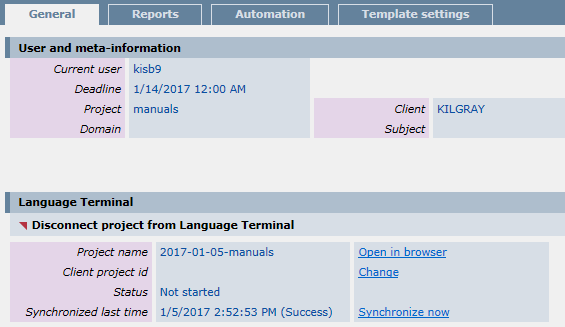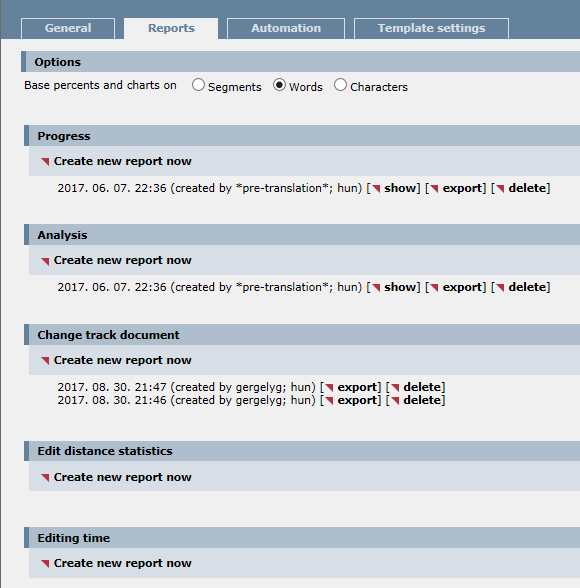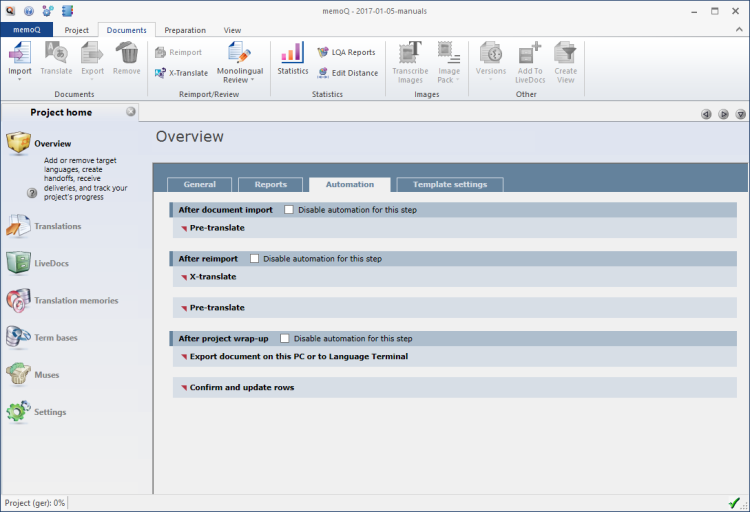Project home – Overview (translator pro)
In the Overview pane, you can view the status of the project, and get reports about it.
If the project comes from a template, you can turn off certain automated actions, and you can also view all the settings that the project received from the project template.
This page is about the Overview pane in memoQ translator pro. To learn about the Overview pane in the project manager edition, see this Help page.
How to get here
- From the Dashboard, create or open a project. Or, check out a project from a memoQ server.
- Under Project home, click Overview. The Overview pane appears.
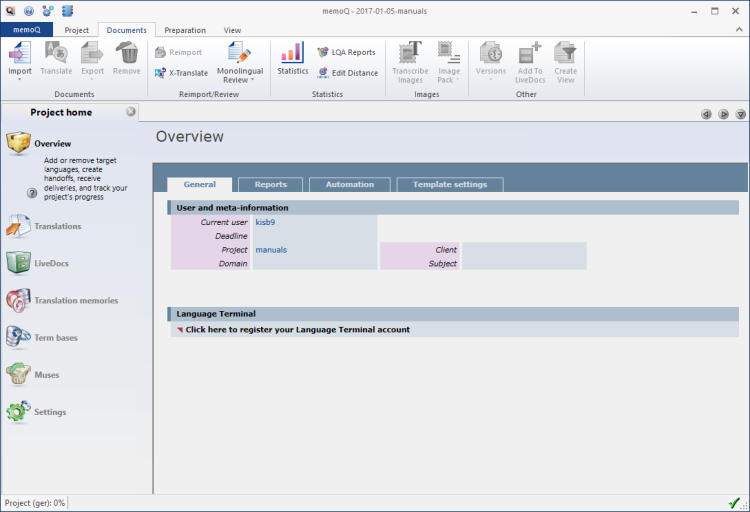
What can you do?
When you finish
To return to your work: Click a document tab at the top of the memoQ window (in the same row as the Project home tab). In most cases, you will return to the translation editor.
To close the project: Click the Close icon in the Project home tab: ![]() Or, on the Project ribbon, click Close Project.
Or, on the Project ribbon, click Close Project.
You can close memoQ, too, if you do not need to work on another project.
You can start creating another project: If you do that, memoQ will automatically close your current project.
